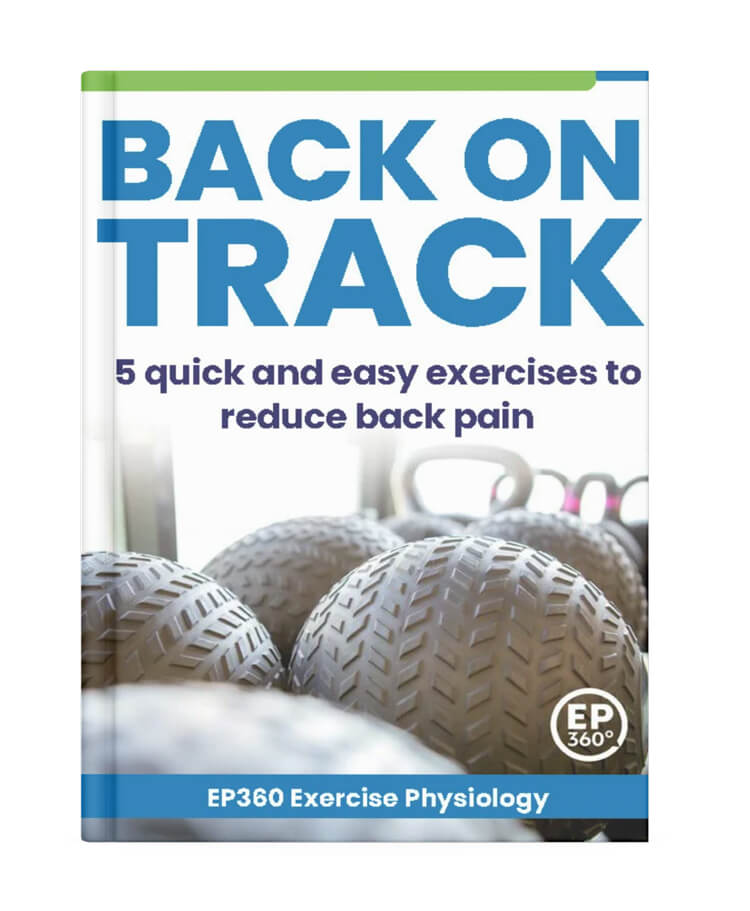Back pain can be a tremendously debilitating condition impacting almost every aspect of your life. But there’s things you can do to improve your situation.
Previously we’ve discussed the importance of identifying and understanding back pain, and the profound benefits that exercise can have in treating and decreasing back pain. In today’s short article we’re going to run through some important basics you should know when preparing to exercise when managing back pain.
When preparing for exercise, a proper warm-up is critical for effective back pain management. Activities like walking, stretching or gentle movements of the torso (that don’t aggravate your pain), help gradually increase your heart rate, raise core body temperature, and promote blood flow to muscles and joints. These actions help loosen stiff muscles, enhance flexibility, and prepare your body for exercise. When managing back pain, a proper warm-up is key to preventing muscle strains and injuries during therapeutic exercises, ensuring their effectiveness.
Picking the proper attire and equipment is also a crucial step when preparing for exercise. It is best to choose comfortable, moisture-wicking clothing and supportive footwear. In terms of equipment, the only essential piece of gear required to complete the exercises outlined in this eBook is an exercise or pilates mat. And remember, having the right equipment and clothing isn’t just about physical comfort; it plays a significant role in mentally preparing you for exercise. When you’re dressed comfortably and have the necessary gear at hand, it signals your brain that you’re ready for action. This mental readiness can boost your motivation, confidence, and overall mindset for the workout ahead. It’s like putting on your superhero suit – it helps you step into your exercise routine with a sense of purpose and determination, setting the stage for a successful session that’s as good for your mind as it is for your body.
Before you get started, here are a few things to think about:
Consult a Healthcare Provider
Before starting any new exercise routine, particularly if you have existing health conditions or back pain, consult with a healthcare provider or physical therapist to ensure the chosen exercises are safe and suitable for your specific situation.
Proper Warm-up
Always begin with a proper warm-up to prepare your muscles and joints for exercise. Gentle cardiovascular activities like brisk walking or light cycling for 5-10 minutes can help prevent strains and injuries.
Maintain Proper Form
Pay close attention to your posture and form during exercises. Performing exercises with correct alignment can significantly reduce the risk of injury and maximise their effectiveness.
Start Slowly
If you’re new to exercise or haven’t been active for a while, start slowly and gradually increase the intensity and duration of your workouts. Listen to your body and avoid pushing yourself too hard too quickly.
Stay Hydrated
Drink plenty of water before, during, and after your workout to prevent dehydration, which can affect muscle function and overall well-being.
Use Proper Equipment
Ensure that any equipment you use is in good condition and appropriate for your needs. For example, choose a comfortable exercise mat and wear suitable footwear.
Breathe Properly
Maintain a consistent and controlled breathing pattern throughout your exercises and ensure you don’t hold your breath. Proper breathing can help stabilise your core and reduce the risk of injury.
Modify as Needed
If an exercise causes pain or discomfort, don’t hesitate to modify it or seek guidance from a healthcare provider or trainer for alternative options.
Rest and Recovery
Allow your body adequate time to rest and recover between exercise sessions. Overtraining can lead to injury and hinder progress.
Listen to Your Body
If you experience any unusual or severe pain, stop the exercise immediately and seek medical attention if necessary. Pain should never be ignored or pushed through.
Remember that safety is paramount when incorporating exercise into your back pain management routine. Always prioritise your well-being and consult with a healthcare professional if you have any concerns or questions about your exercise program.








